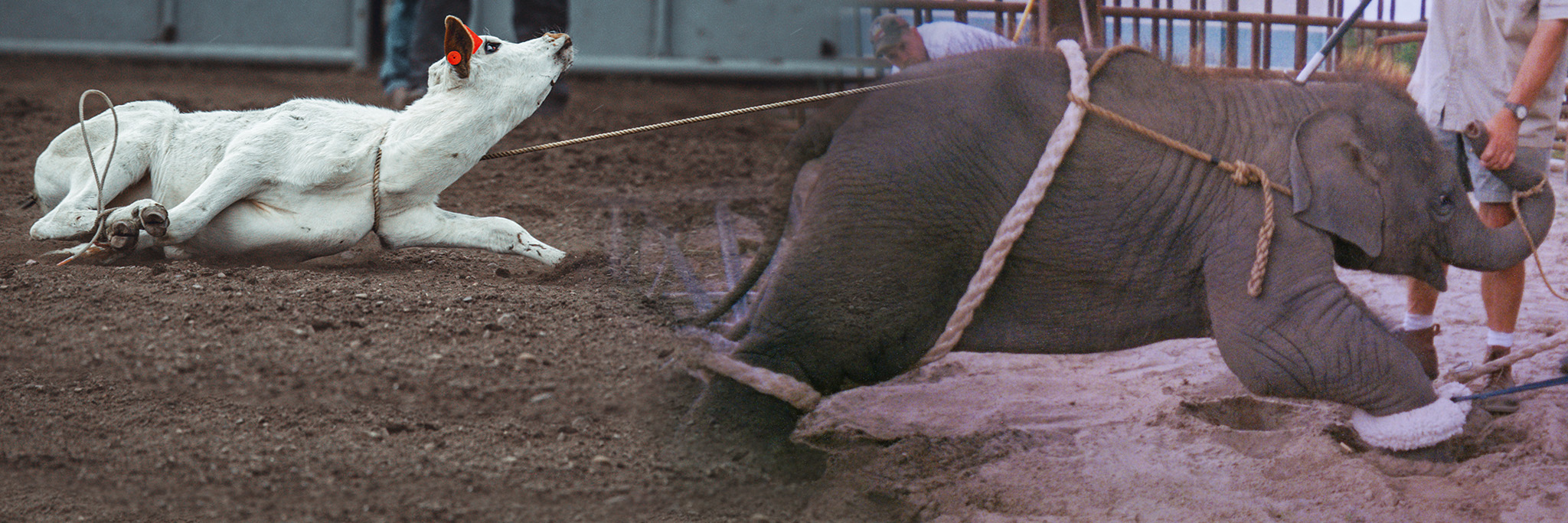*****THIS ALERT IS NO LONGER ACTIVE*****
DO NOT SEND THIS ALERT!
IN THIS ALERT:
Page 1: Ask Tavira, Portugal To Go Bullfight-Free
Page 2: Ask Sintra, Portugal To Go Bullfight-Free
Page 3: Ask the Algarve region (Portugal) To Go Bullfight-Free
Sample Letter #1: Ask Tavira, Portugal To Go Bullfight-Free
Dear Mr. Jos� Mac�rio Correia, President of the Municipality of Tavira,
I respectfully ask you to take a groundbreaking stand against bullfights by refusing to authorize these blood spectacles in
the municipality of Tavira. Please proclaim Tavira an Anti-Bullfighting City.
There is nothing noble about a match that pits a confused bull against men, horses, and weapons. My own family does not
spend money in cities that still host bullfights.
Portuguese-style fights claim to spare animals in the ring. Still, bulls and horses are victimized in the name of entertainment.
A horseman tries to sink three or four decorative javelins (bandarilhas) into the bull's back. Extreme pain drives the bull to pursue his
horseback tormenter. Horses may be inadvertently impaled, even when the bull's horns are padded. Eventually, eight unarmed men (forcados)
enter the ring to goad the worn down bull into charging them. The front man brutally seizes the bull's head in a choke (bull catch or pega de
touros) to immobilize the bleeding animal. Outside the ring, the wounded bull languishes in a pen for several days until he is slaughtered.
In the arena, suffering is the point. Without the bull's prolonged agony, there is no show.
Prior to a fight, bulls are conditioned to heighten aggression. They are typically prodded with electrical shocks. Handlers may
subdue a bull with tranquilizers and laxatives, pound his kidneys, club his head with sandbags, or loop heavy weights around his neck for
weeks. Sometimes they smear a bull's eyes with petroleum jelly or restrain him in darkness to obscure vision. Though illegal, some handlers
shave inches off the bull's horns to impede his sense of direction.
It takes only one bullfight for most tourists to lose respect for a culture that promotes animal abuse as sport or art. Animal
protection organizations worldwide condemn all forms of bullfighting due to the cruelty inherent in both pre-fight rituals and the fight
itself.
Please keep me informed of any plans to permanently ban bullfights, so I may consider Tavira as a travel destination. I
strongly urge you to make Tavira the first Anti-Bullfighting City in Portugal.
Thank you for your valuable time and attention,
YOUR FULL NAME
ADDRESS, CITY, STATE
COUNTRY

 IN THIS ALERT:
Page 1: Ask Tavira, Portugal To Go Bullfight-Free
Page 2: Ask Sintra, Portugal To Go Bullfight-Free
Page 3: Ask the Algarve region (Portugal) To Go Bullfight-Free
IN THIS ALERT:
Page 1: Ask Tavira, Portugal To Go Bullfight-Free
Page 2: Ask Sintra, Portugal To Go Bullfight-Free
Page 3: Ask the Algarve region (Portugal) To Go Bullfight-Free
Sample Letter #2: Ask Sintra, Portugal To Go Bullfight-Free
Dear Mr. Fernando Seara, President of the Municipality of Sintra,
I respectfully ask you to take a groundbreaking stand against bullfights by refusing to authorize these blood spectacles in
the municipality of Sintra. Please proclaim Sintra an Anti-Bullfighting Village.
My own family is uncomfortable visiting any region that still hosts bullfights. We understand diverse cultures embrace a
variety of customs, but a violent contest between humans and a disoriented and mutilated animal does not belong in the modern world.
Portuguese-style fights claim to spare animals in the ring. Still, bulls and horses are victimized in the name of entertainment.
A horseman tries to sink three or four decorative javelins (bandarilhas) into the bull's back. Extreme pain drives the bull to pursue his
horseback tormenter. Horses may be inadvertently impaled, even when the bull's horns are padded. Eventually, eight unarmed men (forcados)
enter the ring to goad the worn down bull into charging them. The front man brutally seizes the bull's head in a choke (bull catch or pega de
touros) to immobilize the bleeding animal. Outside the ring, the wounded bull languishes in a pen for several days until he is slaughtered.
In the arena, suffering is the point. Without the bull's prolonged agony, there is no show.
Prior to a fight, bulls are conditioned to heighten aggression. They are typically prodded with electrical shocks. Handlers may
subdue a bull with tranquilizers and laxatives, pound his kidneys, club his head with sandbags, or loop heavy weights around his neck for
weeks. Sometimes they smear a bull's eyes with petroleum jelly or restrain him in darkness to obscure vision. Though illegal, some handlers
shave inches off the bull's horns to impede his sense of direction.
It takes only one bullfight for most tourists to lose respect for a culture that promotes animal abuse as sport or art. Animal
protection organizations worldwide condemn all forms of bullfighting due to the cruelty inherent in both pre-fight rituals and the fight itself.
Please keep me informed of any plans to permanently ban bullfights, so I may consider Sintra as a travel destination. I
strongly urge you to make Sintra the first Anti-Bullfighting Village in Portugal.
Thank you for your valuable time and attention,
YOUR FULL NAME
ADDRESS, CITY, STATE
COUNTRY

 IN THIS ALERT:
Page 1: Ask Tavira, Portugal To Go Bullfight-Free
Page 2: Ask Sintra, Portugal To Go Bullfight-Free
Page 3: Ask the Algarve region (Portugal) To Go Bullfight-Free
Sample Letter #3: Ask the Algarve region (Portugal) To Go Bullfight-Free
IN THIS ALERT:
Page 1: Ask Tavira, Portugal To Go Bullfight-Free
Page 2: Ask Sintra, Portugal To Go Bullfight-Free
Page 3: Ask the Algarve region (Portugal) To Go Bullfight-Free
Sample Letter #3: Ask the Algarve region (Portugal) To Go Bullfight-Free
Dear Sirs,
To make the lovely Algarve region a repeat destination for tourists, please take a groundbreaking stand against bullfights by
refusing to authorize these blood spectacles. I urge you to proclaim the Algarve an Anti-Bullfighting Region, and gain worldwide approval for
your decision to censure animal cruelty.
My own family is uncomfortable visiting any region that still hosts bullfights. We understand diverse cultures embrace a
variety of customs, but a violent contest between humans and a disoriented and mutilated animal does not belong in the modern world.
Portuguese-style fights claim to spare animals in the ring. Still, bulls and horses are victimized in the name of entertainment.
A horseman tries to sink three or four decorative javelins (bandarilhas) into the bull's back. Extreme pain drives the bull to pursue his
horseback tormenter. Horses may be inadvertently impaled, even when the bull's horns are padded. Eventually, eight unarmed men (forcados)
enter the ring to goad the worn down bull into charging them. The front man brutally seizes the bull's head in a choke (bull catch or pega de
touros) to immobilize the bleeding animal. Outside the ring, the wounded bull languishes in a pen for several days until he is slaughtered.
In the arena, suffering is the point. Without the bull's prolonged agony, there is no show.
Prior to a fight, bulls are conditioned to heighten aggression. They are typically prodded with electrical shocks. Handlers may
subdue a bull with tranquilizers and laxatives, pound his kidneys, club his head with sandbags, or loop heavy weights around his neck for
weeks. Sometimes they smear a bull's eyes with petroleum jelly or restrain him in darkness to obscure vision. Though illegal, some handlers
shave inches off the bull's horns to impede his sense of direction.
There is nothing noble about a match that pits a confused bull against men, horses, and weapons. In fact, it takes only one
bullfight for most tourists to lose respect for any �tradition� that perpetuates animal abuse as sport or art.
Please keep me informed of plans to permanently ban bullfights, so I may visit the culturally rich towns of the Algarve. I
respectfully ask you to make the Algarve the first Anti-Bullfighting Region in Portugal.
Thank you for your valuable time and attention,
YOUR FULL NAME
ADDRESS, CITY, STATE
COUNTRY











